Research Objective
The purpose of this research was to gather actionable insights on how might we improve the user experience of the National Library Board by applying user research methods. The study was conducted over a period of five weeks and six days. The role for this research journal was as a UX researcher and observer, responsible for capturing and analyzing research insights.
A statutory board, the National Library Board (NLB) was established since 1st September 1995. It is managing the National Library which is a network of public libraries and a digital library as well.
Sim, Cheryl, 27 March 2015, National Library Board — https://eresources.nlb.gov.sg/infopedia/articles/SIP_2015-03-23_150155.html
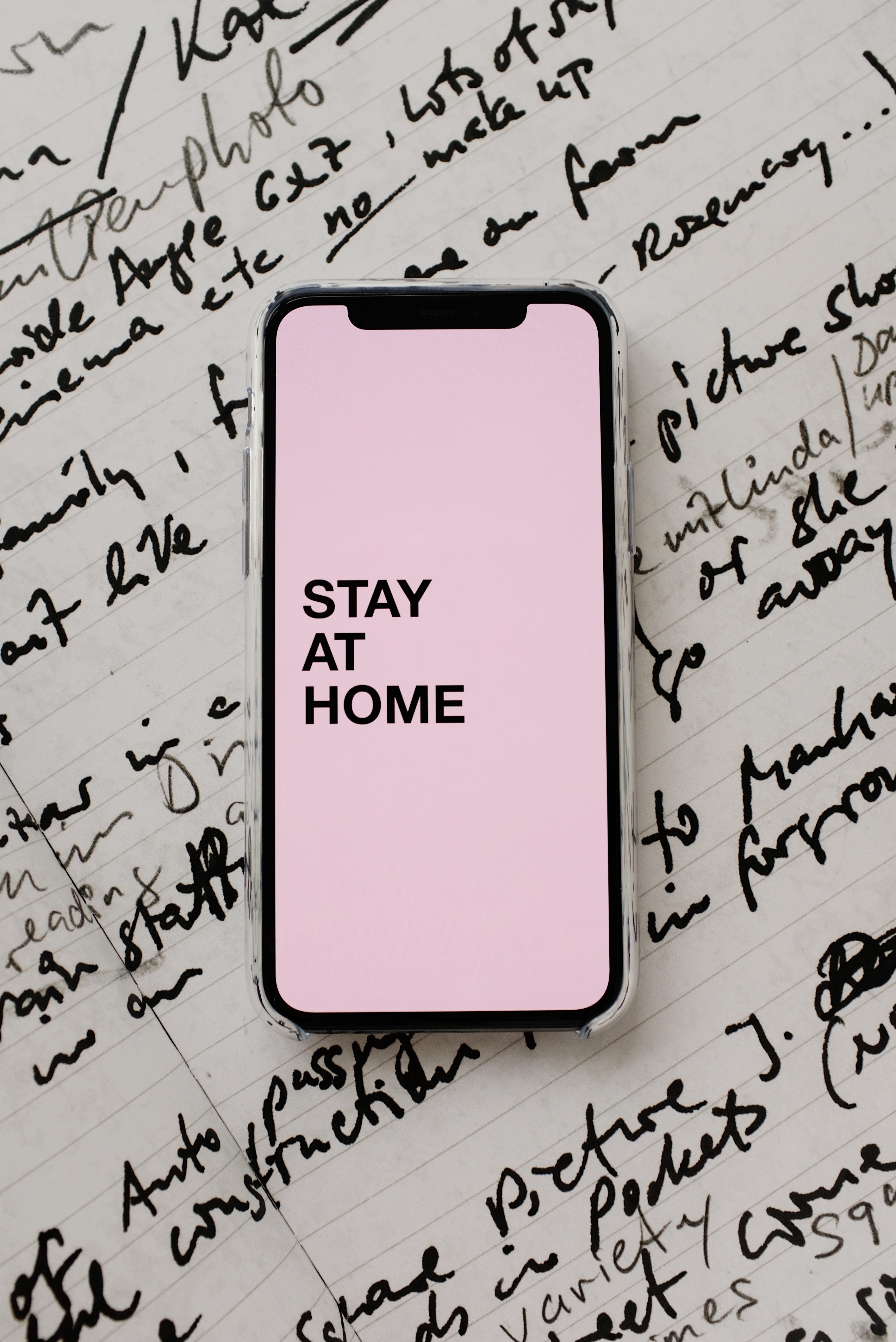
Overcoming the
Pandemic Outbreak
As is widely recognized, conducting in-person research was not possible during this period. Therefore, shadowing, screen observations, and interviews were conducted via the Zoom app, which participants were already familiar with.
A key advantage of conducting the research via Zoom was that both participants and the researcher saved time and avoided the need to travel for meetings.
Inviting Participants
With everyone working from home, inviting participants for the focus group posed no issues. Five interviews were conducted individually via Zoom, three of whom work in the same industry. I also participated in the sessions to gain an immersive perspective for the study.
Understanding the Participants' Behavioral
A simple task instructing participants to browse the NLB website and borrow a book was given to each participant. Their activities were observed through the shadowing process via Zoom, and all sessions were recorded with participant consent. Activities, emotions, and quotes were noted during the shadowing process and later reviewed and finalized by referring back to the recordings.
Participant's Perspective
The activities, emotions, and thoughts tracked from users were organized into an Empathy Map. Observations indicated that the participant tended to rely on the search and filtering functions. Frustration with the limited range of recommendations and delays shifted to satisfaction once book availability could be checked. The desire for broader filtering and sorting options was clearly expressed during the borrowing process.
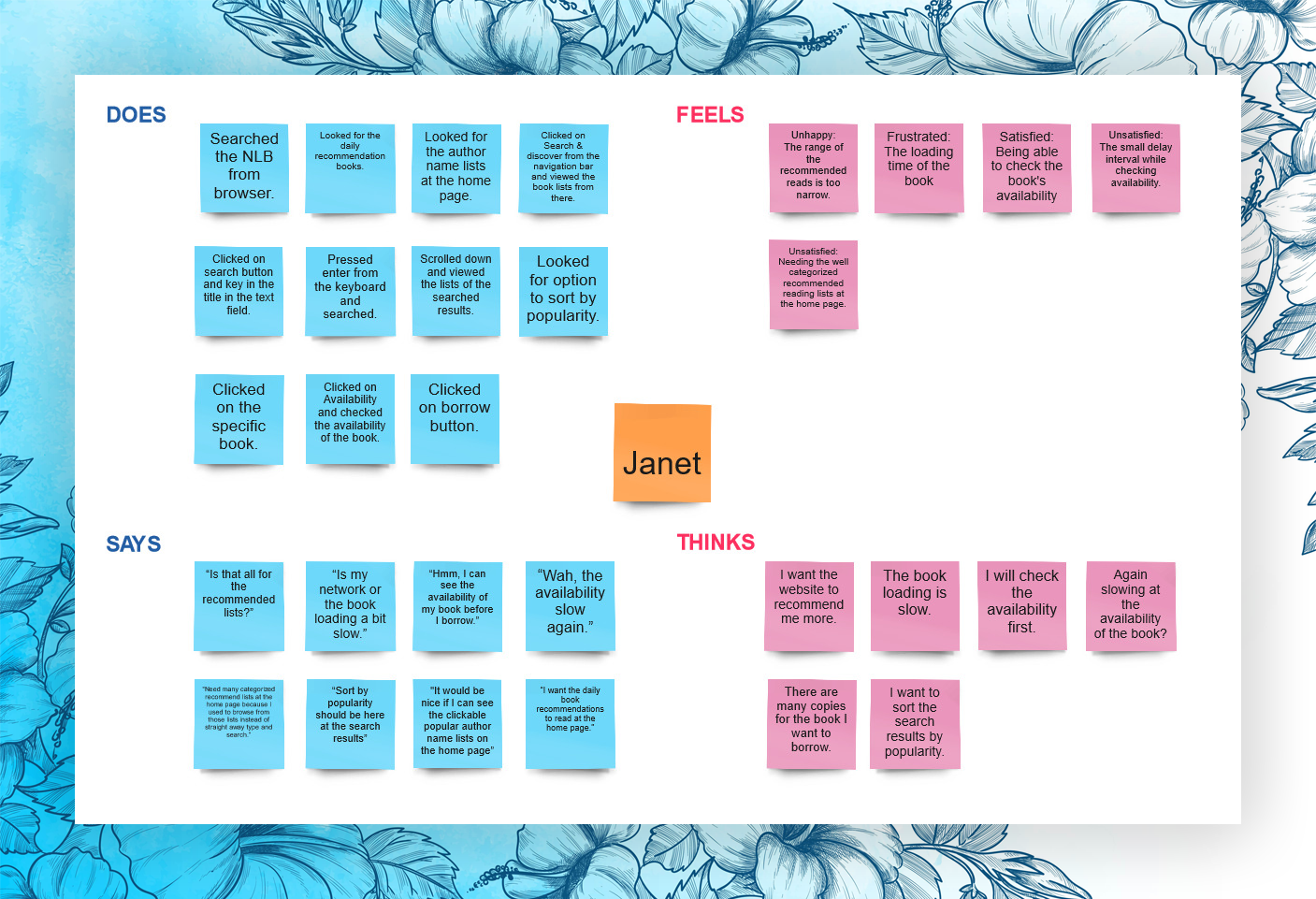
Participants' Perspective
All observations were translated into opportunities aimed at addressing the problems users experienced. The process deconstructed the interpretations to identify solutions from the users' perspective.

Opportunities Worksheet
Conducting the User Interviews
To gain a full understanding of participants' reading experiences, questions were prepared to encourage detailed explanations. Comforting questions were included to help interviewees feel at ease. The initial questions focused on how participants typically browsed for books, followed by more conversational and friendly prompts. The session concluded with feedback questions. Insights gathered from their responses provided a clear understanding of the desired clusters of data.
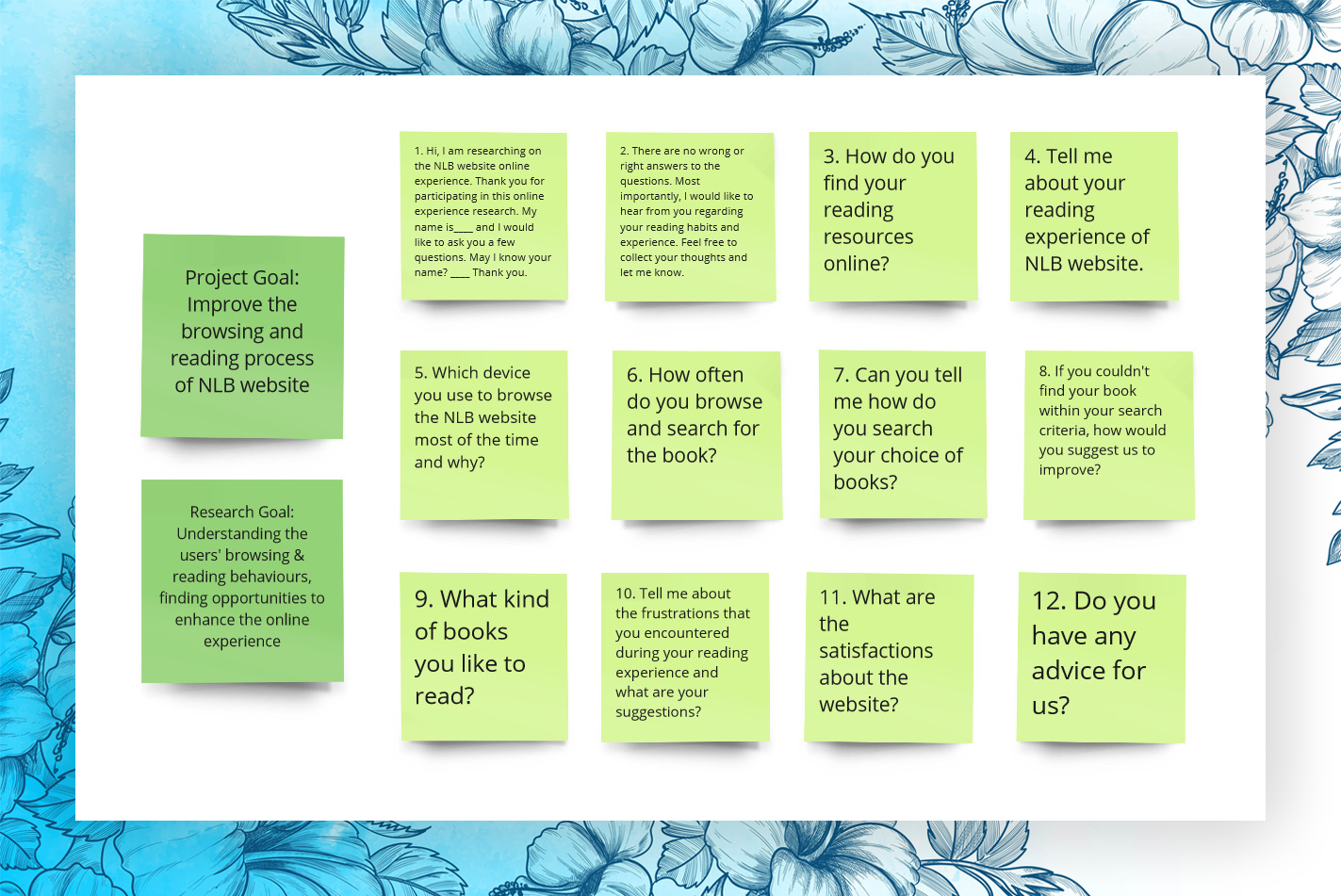
Conducting the User Interviews
Insights from Data Clusters
After completing the user interviews, the data clusters were organized into categorized groups. Most participants preferred selecting books from daily or categorized recommendations rather than typing in search queries. Some participants expressed a desire for additional sorting options in the search results.
Although loading times for the website could not be improved during the study, they still impacted the user experience by causing impatience. An Affinity Diagram combining interview data, observed user behavior, and secondary research findings is shown below.
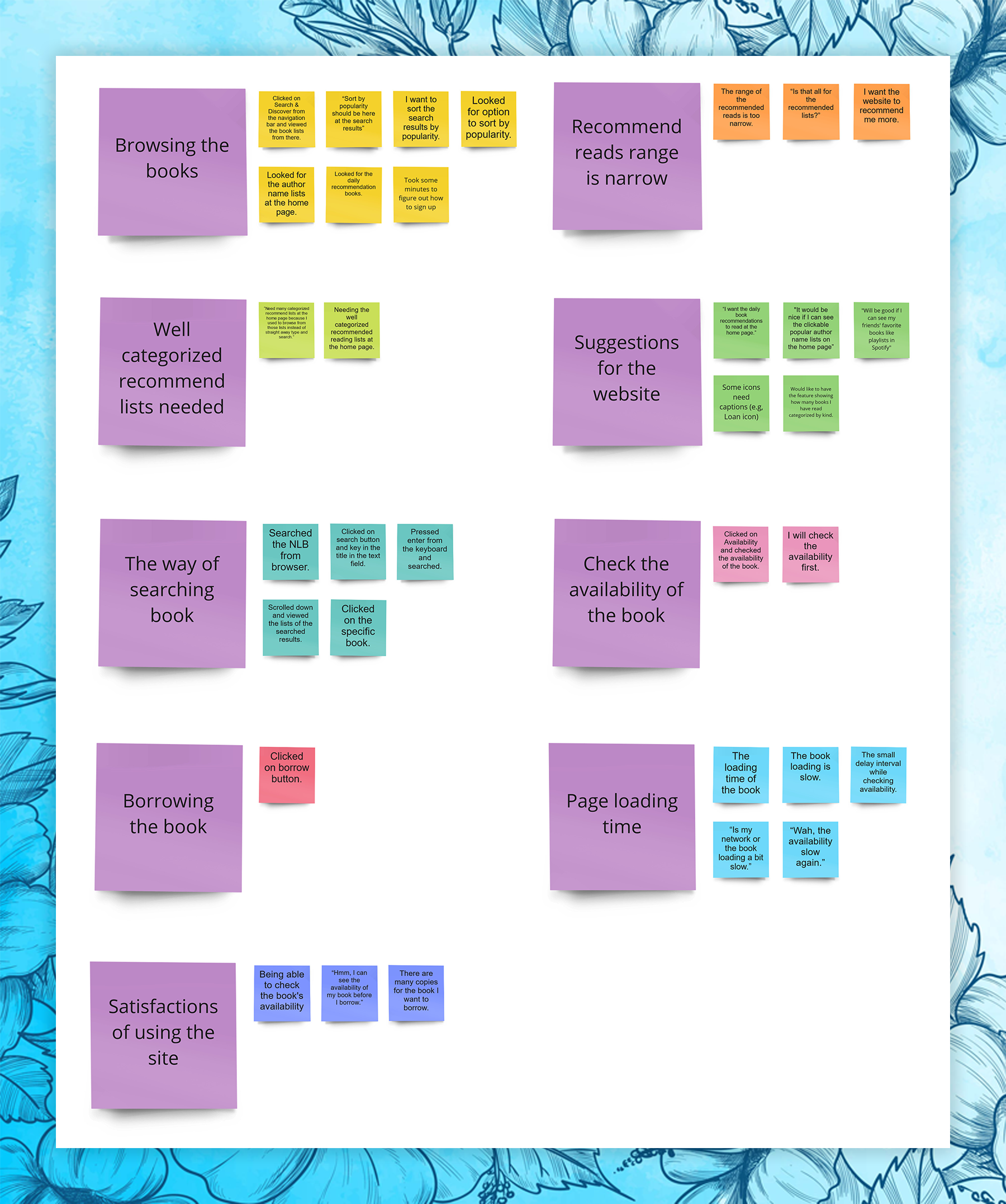
Insights from Data Clusters
Focusing on the Persona
Janet works as a digital marketing executive and is responsible for developing marketing and content strategies. To achieve her goals of raising brand awareness and maintaining lasting digital connections with clients, she relies heavily on reading resources to generate trendy and innovative ideas. She also needs to understand the available platforms for promoting content but faces difficulty finding eBooks focused on effective marketing software.
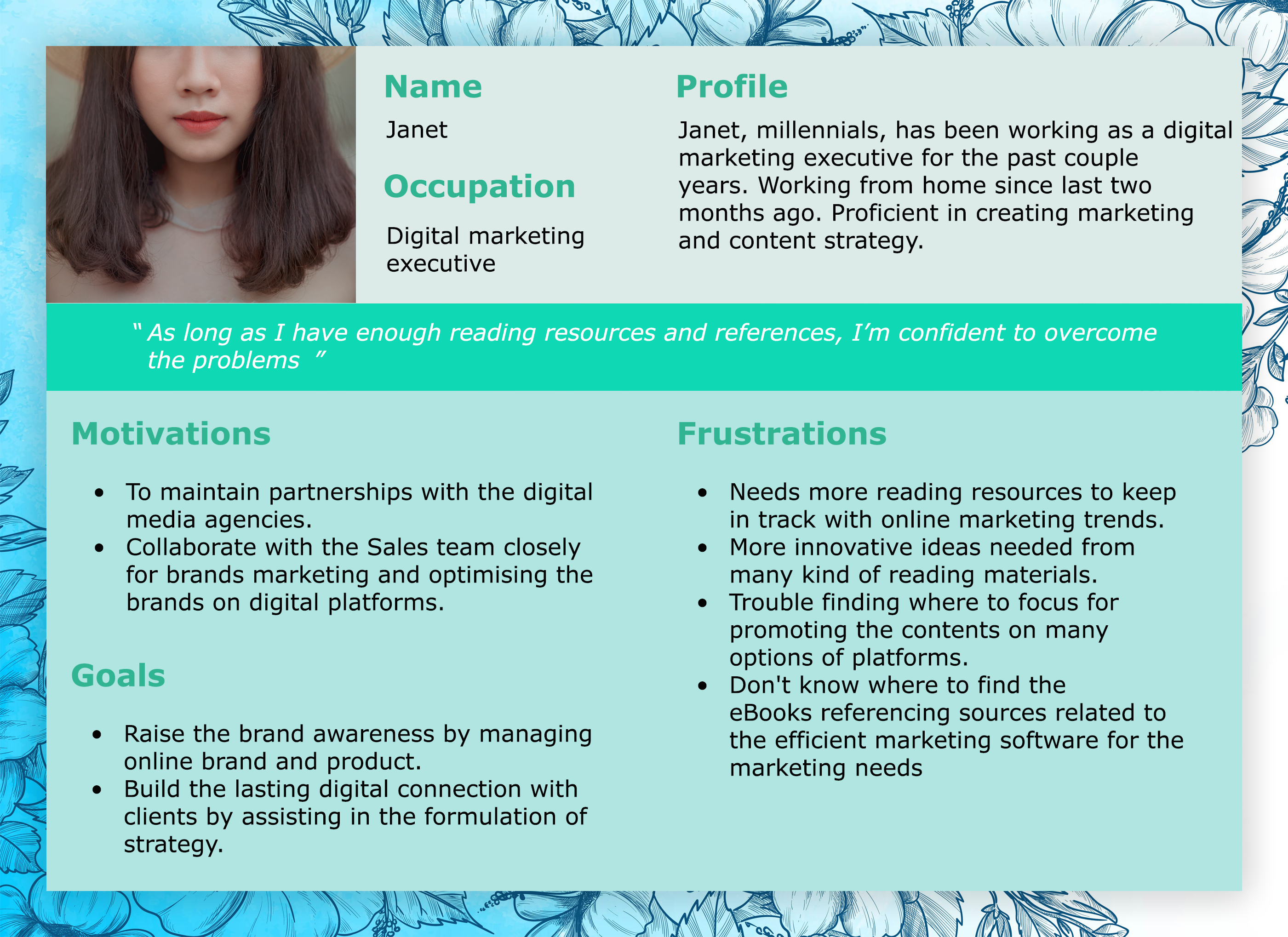
Focusing on the Persona
Phases of the Interaction Process
The journey map below visualizes the scenario of how Janet browses and borrows a book. The phases of the journey map were derived from data collected during the previous research processes. The user's actions, behaviors, and emotions are detailed throughout, with opportunities to improve and enhance the browsing and reading experience presented at the final stage of the map.
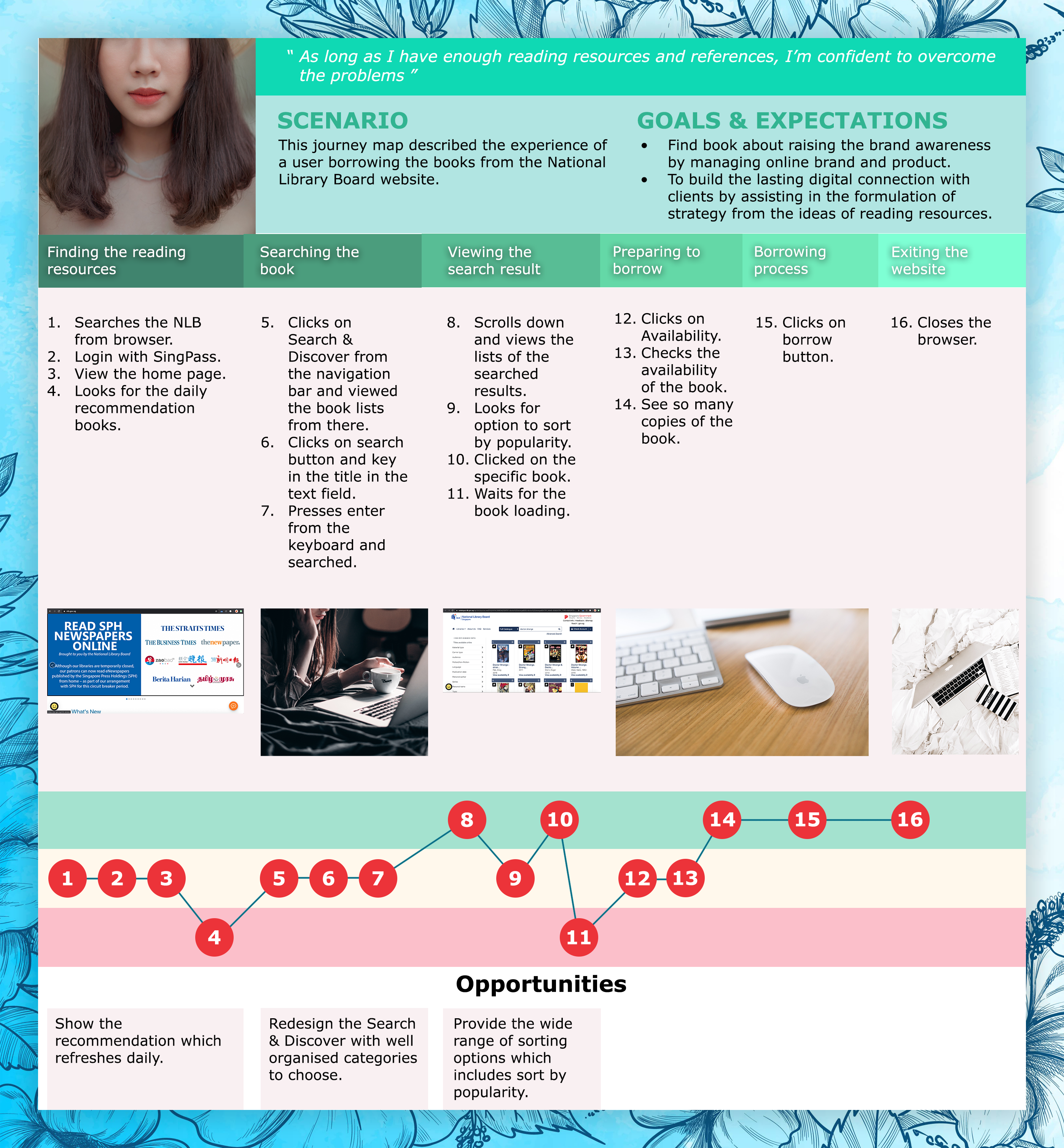
Phases of the Interaction Process
Illustrating the Steps
The sketches in the storyboard below visually express Janet's story through scenarios and captions. This storyboard helps illustrate her environment, emotions, and behaviors. The illustrations focus on simplicity, highlighting her facial expressions to make the story easier to understand and remember.
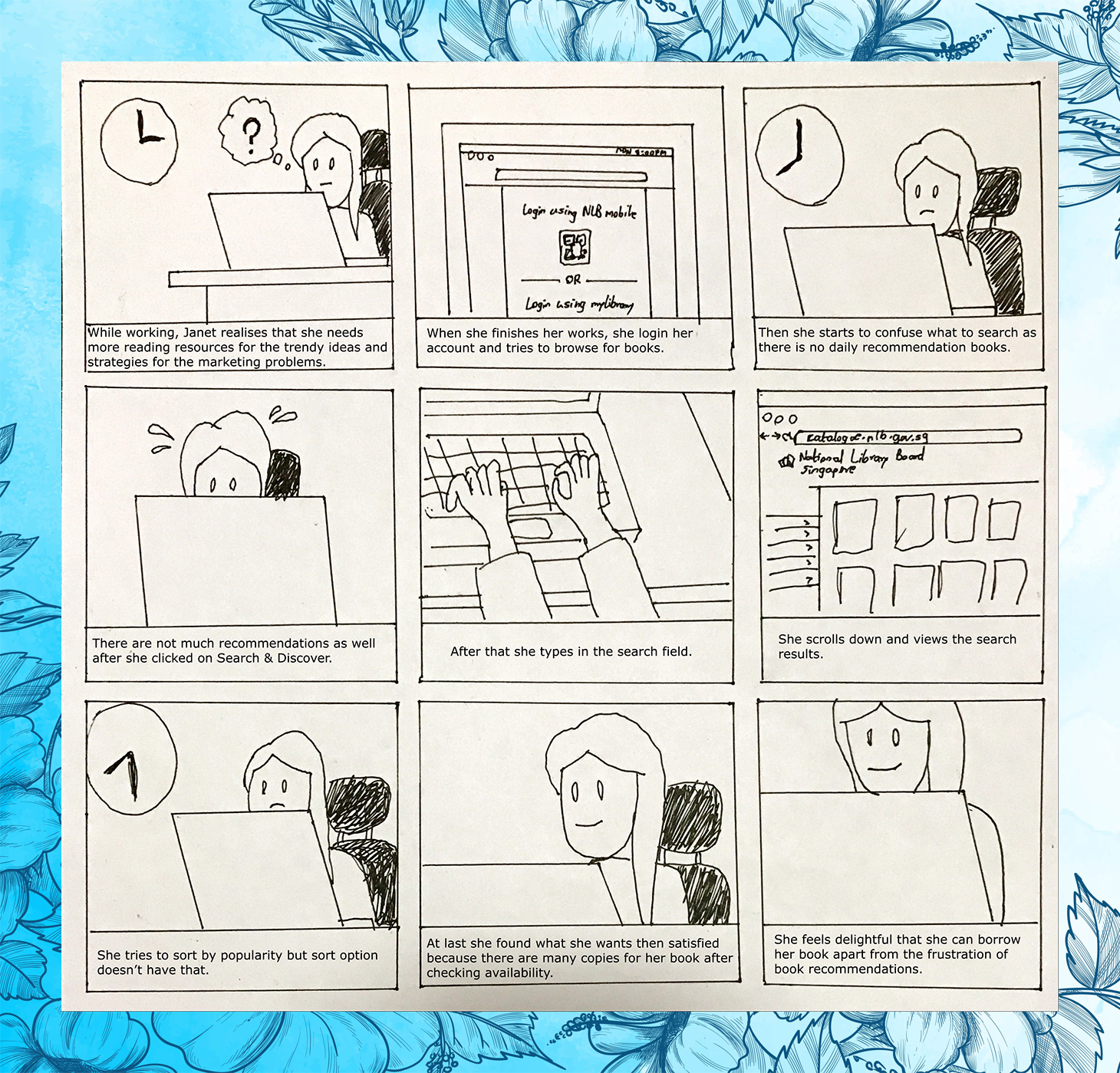
Illustrating the Steps
Research Analysis and Communication
Once the research phase is complete, the next step is to highlight areas of concern, opportunities, and issues based on key findings and insights gathered through the various methods and activities used in earlier stages. The following points summarize the research analysis and key communications:
- Perferences — Participants' favorite books, interests, reasons for using NLB, dislikes, and suggestions.
- Their Perspectives — Particular perspectives from participants regarding the NLB website.
- Different Rankings from Individual Participants — Participants identified interface issues with varying priorities, resulting in different rankings of concerns.
- Useful Suggestions — Perceived same and different suggestions for the improvement and amendment of NLB website from individual participants.
Collecting Intentional Data
Four survey measurements were conducted using Google Forms, focusing on the participants' Browsing Process and Book Recommendations. The surveys intentionally collected information on preferred catalog types, favorite books, reasons for these preferences, and overall interests to gain a comprehensive understanding of how search and filtering results could be improved. Participants were also asked about the simplicity of the browsing process, the attractiveness of the website, their satisfaction, and any suggestions for enhancements.
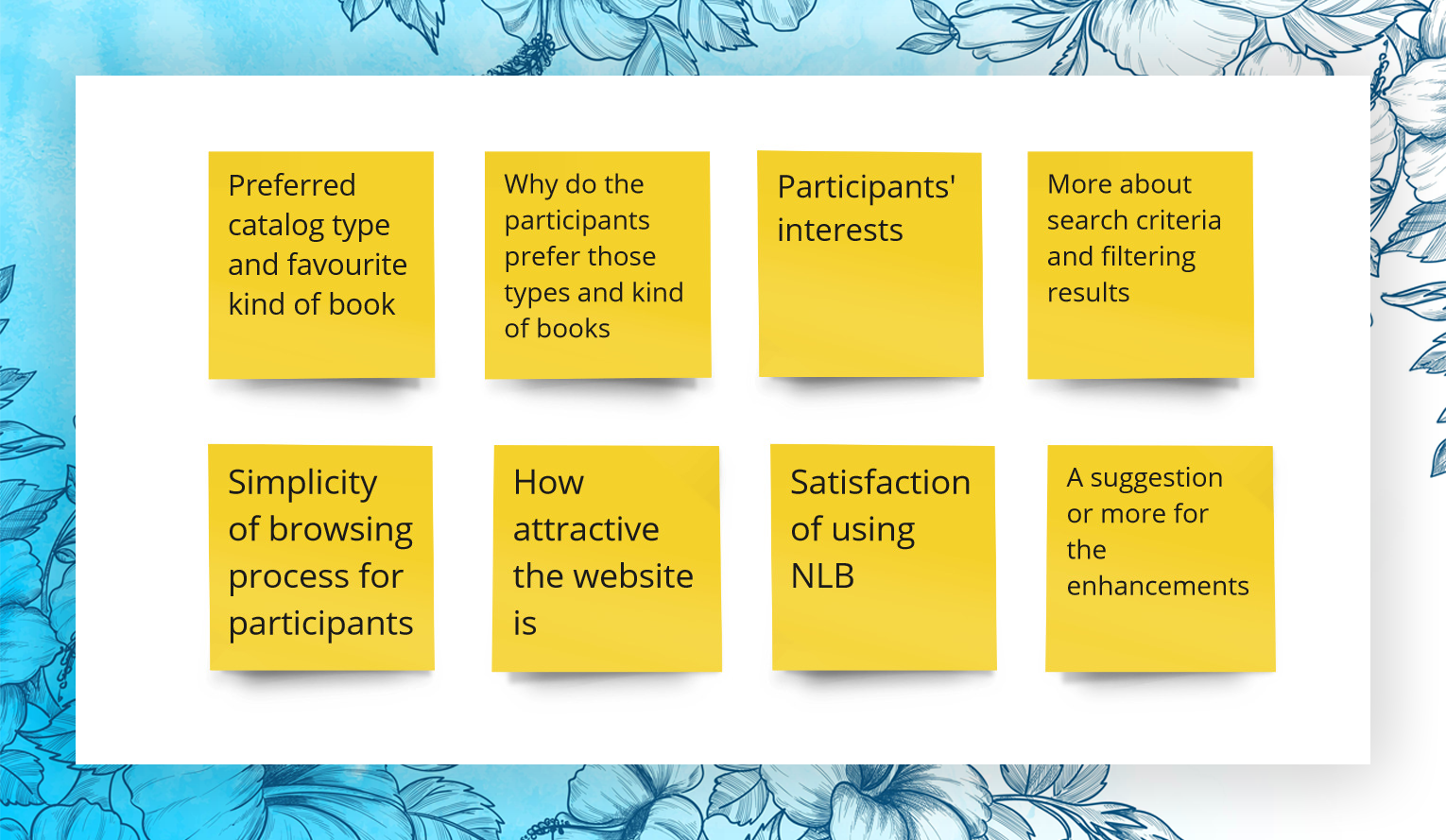
Collecting Intentional Data
Rating the Violated Heuristics
A Heuristic Evaluation was then conducted using Google Sheets. The relevant heuristics were first listed, after which four evaluators were selected and briefed on how to interact with the listed points. Each heuristic was assessed and measured using Severity Ratings.

Rating the Violated Heuristics
Breaking Down the Issues and Metrics
The metrics indicated that users spent more than half a day browsing the NLB website, three days per week. Other websites used by participants included Open Library, Google Play Books, and the Libby App. First-time users struggled to locate the search bar at a glance. Additional issues identified included the need for more optimized recommendations, complex terminology, unclear book covers and descriptions, and certain components that were unclickable.
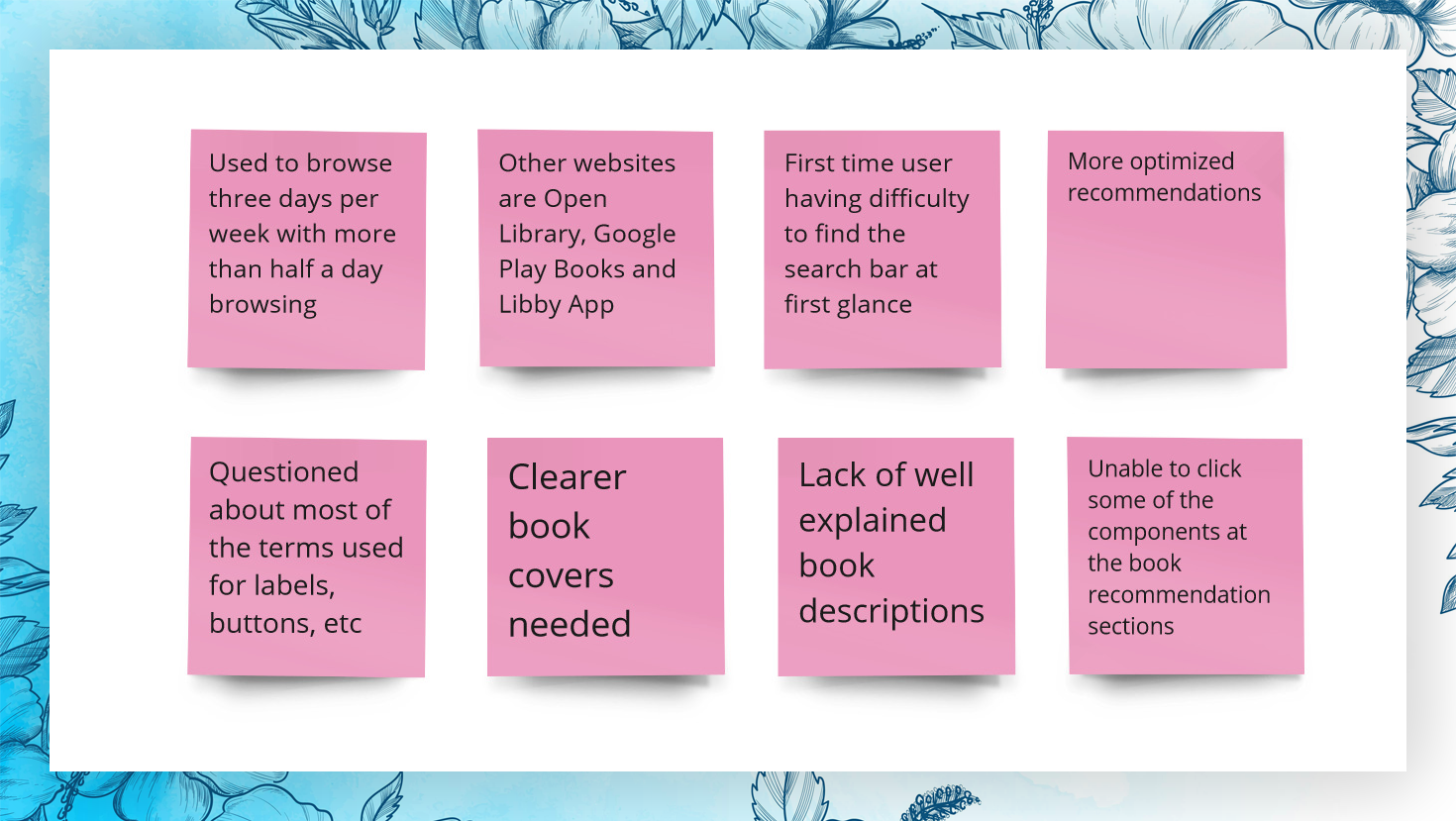
Breaking Down the Issues and Metrics
Proposing the Opportunities
Several opportunities were identified based on the two "How Might We" statements.
How might we enhance the website to have less difficulties for browsing process?
- Place a prominent icon within the search box on the homepage.
- Offer additional sorting options to accommodate individual users' preferred ways of organizing search results.
- Standardize and simplify terminology across all component names to improve clarity and consistency.
- Enlarge book covers and provide clearer descriptions for better readability.
How might we optimise the recommendation of books more efficiently?
- Ensure all components are clickable in the recommended books section to improve user interaction.
- Display "People who borrowed this also borrowed" section on every book details page to provide additional recommendations.
- Include genres for all recommended books to help users make informed choices.
The Hindrance During the Research
The research processes proceeded smoothly, supported by detailed notes and video recordings that could be reviewed at any time. The only limitation was the absence of face-to-face meetings and interviews, which restricted the in-person research experience.
